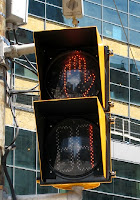 It was interesting to see that smart objects / smart object services, context, NFC, and RFID become very mainstream. It seems that nearly everyone buys into these ideas now.
It was interesting to see that smart objects / smart object services, context, NFC, and RFID become very mainstream. It seems that nearly everyone buys into these ideas now.
Dr. Mohsen Darianian (from Nokia Research, same building as Paul Holleis is at the moment) showed an NFC-advert video which reminded me on the results of an exercise we did on concept videos within an HCI-class at the University of Munich 🙂
Overall it seems that acceptance and business models are of great interest and that to create them a lot of technical insight is required. The issues related to user interfaces, interaction, experience become central factors for the success of products and services.
 One discussion was on the motivation for people to contribute (e.g. user generated content, write open source code, answer questions in forums, blogs). Understanding this seem crucial to the prediction whether or not a application is going to fly or not.
One discussion was on the motivation for people to contribute (e.g. user generated content, write open source code, answer questions in forums, blogs). Understanding this seem crucial to the prediction whether or not a application is going to fly or not.
Besides contributing for a certain currency (e.g. fame, status, money, access to information) it seems that altruism may be an interesting factor for motivating potential users. Even if it is a low percentage within our species the absolute number on a world wide scale could be still enough to drive a certain application/service. There is interesting research on altruism in the animal world (or at the researchers page http://email.eva.mpg.de/~warneken/ ) maybe we should look more into this and re-think some basic assumptions on business models?
Our break out group was in the rooms of the Institute of Electronic Business e.V (http://www.ieb.net/). It is a very pleasant environment and their link to the art school reflects very positive on the atmosphere and projects. The hand drawn semacodes were really impressive.
I often wonder why one would like to include sensing into other objects. It seems however that there is a tradition and has its roots before the digital 🙂








